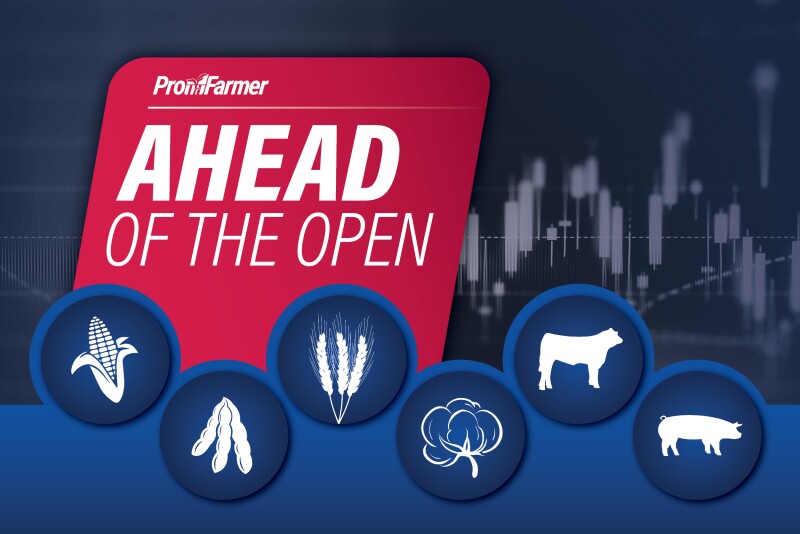GRAIN CALLS
Corn: 1 cent lower to 1 cent higher.
Soybeans: 1 to 3 cents higher.
Wheat: 2 to 4 cents lower.
GENERAL COMMENTS: Soybeans continue to see relative strength and traded above key technical resistance overnight. Corn and what saw modest weakness overnight on profit-taking as each has struggled to overcome resistance levels the past couple sessions. Outside markets are mixed this morning as front-month crude oil futures are modestly higher on corrective buying while the U.S. dollar index is around 400 points higher.
The U.S. corn harvesting progress has lagged behind last year’s pace, according to a Reuters poll of 10 analysts. On average, the analysts estimated 44% of the U.S. corn crop had been harvested as of last Sunday, with estimates ranging from 35% to 55% complete for corn. Those estimates align with Farm Journal’s recent survey that found 43% of corn harvest was wrapped up and 80% of soybean harvest was complete as of the middle of last week. Those numbers were derived largely from producers in the seven Crop Tour States in the Corn Belt – although data from other areas was consistent with the overall trend.
President Trump on Monday signed a landmark pact with visiting Australian Prime Minister Anthony Albanese to boost U.S. access to rare earth minerals and other critical minerals in an effort to counter China’s tight grip on the supply chains of key metals. The two governments will jointly invest in a swath of mines and processing projects in Australia to boost production of commodities used in advanced technologies from electric vehicles to semiconductors and fighter planes.
Waiting times for commodity vessels stacking up off China’s ports increased to the longest this year, as the geopolitical sparring between Beijing and Washington disrupts global trade, reported Bloomberg today. It took an average of 2.66 days for a vessel to get into a berth after arrival in the week to Oct. 19, according to Bloomberg calculations based on data from ship-tracking platform Kpler. That’s an increase of 17% week-on-week and the longest period this year, the calculations show. “China is the world’s largest commodity importer, and vessel snarls — if prolonged — could ripple through the global supply chain, affecting liquid cargoes such as crude, as well as bulks like iron ore. Beijing and Washington have sparred over shipping, with China introducing a hefty extra fee on vessels known to have American links, following a similar U.S. move,” said Bloomberg.
CORN: December corn continues to trend sideways. Key resistance persists at $4.23 1/4, the 100-day moving average. Bulls are seeking to maintain prices above support at $4.19 1/2.
SOYBEANS: November soybeans continue to see relative strength. Bulls managed to push prices above the 200-day moving average at $10.33 3/4 overnight, a key pivot today. Resistance stands at $10.40 while support comes in at $10.25 on a reversal lower.
WHEAT: December SRW wheat reversed lower overnight. Still resistance persists at the 20-day moving average at $5.08, while bulls are seeking to hold support at $5.00 on a push lower.
LIVESTOCK CALLS
CATTLE: Choppy/higher.
HOGS: Choppy/lower.
CATTLE: Cattle futures are expected to open with a mostly firmer tone in a continuation of yesterday’s strength. The marketplace is still digesting reports that the U.S. will increase imports of Argentine beef. Cash cattle prices saw impressive strength last week, rising $5.75 to $239.82. Wholesale beef saw impressive strength Monday with choice cutout rising $2.41 to $369.18 while select rose $3.19 to $353.46.
HOGS: Lean hog futures are expected to open with a mostly weaker tone in a continuation of recent selling pressure. December futures are oversold technically which could limit the downside after the open. The CME lean hog index is down another 54 cents to $95.58 as of Oct. 17. Pork cutout slid 62 cents to $102.08 on Monday, led by losses in bellies.

